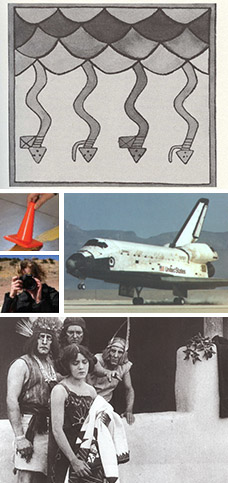
, and small scale test
ing of s
amples (Torres Laboratories).
O
Email: Click here to Email Dr. Hockensmith
ther equipment ava
ilable:
100 kV JEOL and Phillips 430 300 kV transmission electron microscope (TEM)
JEOL 6100 with EDS and Cambridge scanning electron microscope (SEM)
Flame Atomic Absorption spectroscopy
X-ray Fluorescence
X-ray Diffraction
Inductively Coupled Plasma Mass Spectrome
A variety of research projects supported by private and public corporations, the National Science Foundation, ter
Research Greenhouse (a professional greenhouse dedicated to research on phytoremediation and phytomining)
The EMRTC Chemistry Laboratories work closely with the other divisions of EMRTC and its affiliates such as METTOP, IERA and the Playas Training and Resource Center. The Chemistry Laboratories also work closely with The Center for Energetic Materials and Energetic Devices (CEMED) an organization that solves practical pr
oblems utilizing the skills and facilities of New Mexico Tech/EMRTC, the
-
Los Alamos National Laboratory, and Sandia National Laboratories.
T
he primary focus of the Chemistry Laboratory is the thermal decomposition mechanisms of explosives and propellants. The reaction products and kinetics of decomposition a -
re analyzed to provide necessary safety information on t
hese materials. EMRTC Multimedia EMRTC has been featured on many national media programs including Good Morning America, -
ThermoElectron Ultraviolet-Visible spectrometer (UV-vis):
Fox News, CNN, The Discovery Channel and Mythbusters. Click below to learn more Edit Studio Promotional Brochures Videos and Streaming Media Multimedia Edit Studio EMRTC's assets include a highly trained team of multimedia experts whose capabilities range from high-speed digital editing to digita -
l still photography. High-end video syst
ems, as well as state-of-the-art field cameras, are used to compile video and still images to DVD/multimedia packages tailored to the individual customer's requirements. Video Documentary Video Training Video Video Conversions and Compressions High-Speed Phantom Video for Marketin -
g
Digitalization of X-R
ay and Streak Film Avid Non-linear Editing Systems DVD Authoring and Duplication Blow-Away Cameras Helmet Cameras Photography High Resolution Digital Still Photography Digital Production including Printing and Scanning Image Enhancement Other Capabilities Graphic Design Marketing Lamination and Framing Edit Studio Marketing The Edit Studio's highly trained team -
of multimedia professionals is available for photography, video and graphics pro
jects to all New Mexico Tech Departments. That's right; now you have a full-service, one-stop shop for all your marketing needs. For information, call the EMRTC Edit Studio at 575-835-5654. Location Photography and Video Have an event coming up that you want your department to remember? Let the Edit Studio capture it. We have all the equipment and expertise to create almost any type of video. From documentary style videos to tra -
ining videos, we show up on s
ite to capture your event. We can even provide prints on site. Video Conversion and Compression Let us convert your media to DVD or compress it for the web or PowerPoint. That's right; we can take your large, slow movie files, and compress them to be used on the web or in a -
PowerPoint presentation with clar
ity and resolution. Video Creation and Editing Want to get more students interested in your department? The Edit Studio can create a stunning video for prospective students. Our team of photo and video exp - erts can come to your lab, shoot your latest achievements and edit the material into an eye-catching piece that's sure to draw in many a new student. Print Design Our graphics professionals can put together
your marketing package. Br
- ochures, postcards, posters, conference materials - we can do it all. We c
- an even put your printed materials to work for you on the web with
- electronic brochures and catalogs. W
- eb Design A well d
- esigned web space
- gives prospective students and their parent
- s the great first impression your department is seeking. Let the Edit Studio design a site that is sure t
The o wow them. Sure you have all the programmers you need, but what about a professional web designer? The Edit Studio can create one page or an entire site based on your specs and content. We even have a professional programming consultant to make sure your site is at the top of any search engine list.
Other Graphics Services
We Laminate. Our lamination services range from small pieces up to 36x48" posters, encapsulated or mounted on foam core wi
th laminated, matte or glossy finish.
We Scan. Print and film. From simple photo scanning to large 11" x 17" scans, we scan it, retouch it and burn it to CD or DVD.
We Print. Whether you need one page or many pages, the Edit Studio is your o

